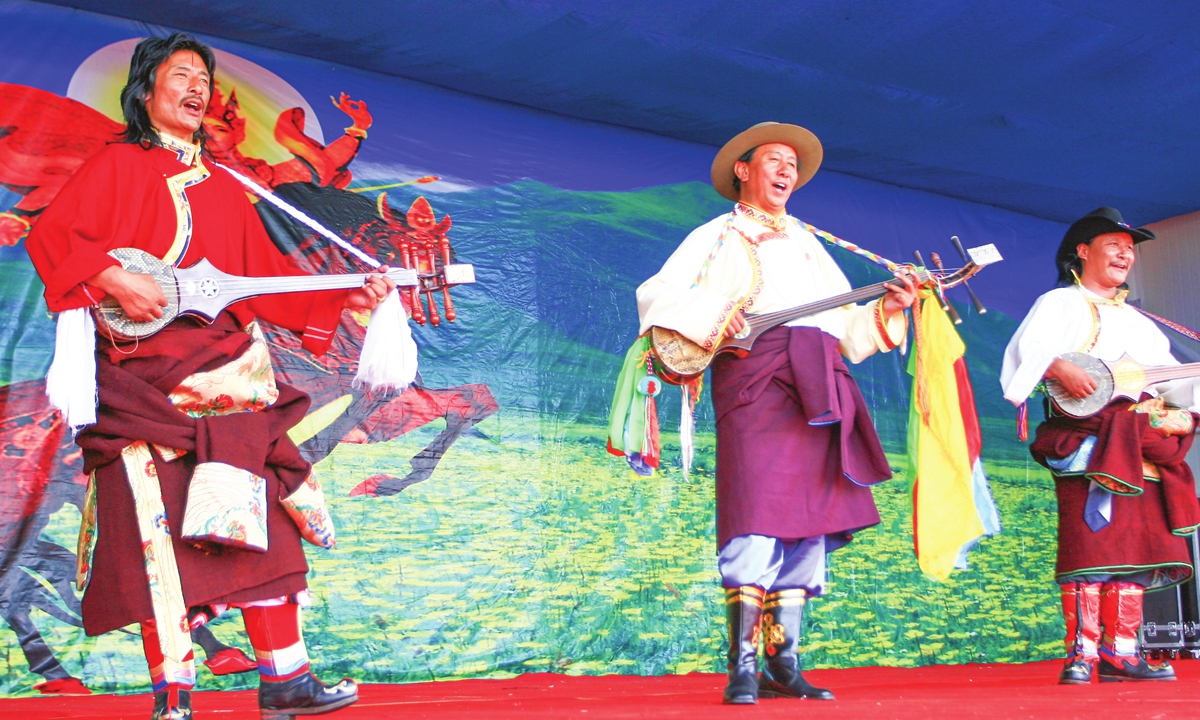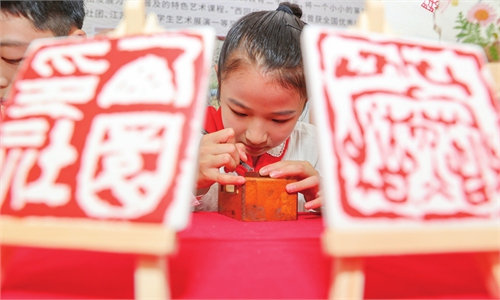
Folk artists perform The Epic of King Gesar in the Gannan Tibetan Autonomous Prefecture in Northwest China's Gansu Province. Photo: IC
'The Epic of King Gesar' (I): Longest epic in the world about ethnic Tibetan heroThe Epic of King Gesar is an epic about the legendary Tibetan warrior - King Gesar. It is the longest and most comprehensive epic in the world, and is also called the "Homeric Epic of the East."
Gesar tells the story of a half-man-and-half-god Tibetan hero who came down from Heaven to help subdue evil and assist humans. The main story line consists of the birth of Gesar on Earth, his expedition to subjugate demons and his return to Heaven. The second part is the longest part of the epic with every important battle constituting a relatively independent epic of its own. There are more than 3,000 characters described in the epic, a majority of which is sung.
The epic dates back to more than 1,000 years ago, and has been inherited by folk artists (storytellers and singers) from generation to generation. It is believed that the composition of the epic underwent the following three stages:
First, the story of King Gesar originated between the 3rd century to the 6th century in the slavery society in what is now Southwest China's Xizang Autonomous Region. Due to wars between different tribes, people suffered from displacement and hardships, so they longed for a unified state and the emergence of a hero. Such a desire combined with ancient Tibetan legends, tales and poems gave rise to the original form of the epic.
Second, after Songtsen Gampo unified all the tribes on the Qinghai-Xizang Plateau in the 7th century, the epic was enriched and spread to ethnic groups in neighboring areas. As the Tubo Kingdom was an important period in ethnic Tibetan history when many major events occurred, it became the main source of The Epic of King Gesar, including the nearly 100 battles detailed within. So folk artists developed them and turned them into fantastic stories. As the army of the Tubo Kingdom went on expeditions, it was circulated to the southern area of the Himalayas.
Third, after the Tubo Kingdom ended in the 10th century, Tibetan society shifted from a slavery society to a feudal serf society. During this period, the epic, whose basic structure had been established, was widely spread and further developed.
The text of the epic is divided into two categories: chapters and sections. The epic contains more than 300 sections with over 1 million verses, equal to 50 times of the length of Homeric epics. Translated into Chinese, it is more than 20 million characters in five volumes.
Global Times


